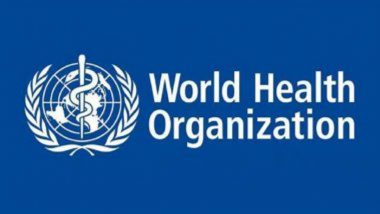New Delhi, November 16: India will soon introduce the human papillomavirus (HPV) vaccination to eliminate cervical cancer as a public health problem, said Dr Poonam Khetrapal Singh, World Health Organization (WHO) Regional Director for South-East Asia.
Globally, cervical cancer is the fourth most common cancer among women, with an estimated 604000 new cases and 342000 deaths in 2020, of which the Region accounted for 32 per cent and 34 per cent, respectively. Study: Cancer is Diagnosed More in Patients with Type 2 Diabetes.
"Vaccination of girls against human papillomavirus (HPV), screening and treatment of pre-cancer lesions, and improved access to diagnosis and treatment of invasive cancers are critical, cost-effective measures that policymakers should urgently apply to eliminate cervical cancer as a public health problem," said Dr Singh.
Countries of the Region continue to make steady and sustained progress against cervical cancer, in line with the region's flagship priority on preventing and controlling non-communicable diseases, as well as the 2021 Regional Implementation Framework on eliminating cervical cancer as a public health problem.
"Five Member States - Bhutan, Maldives, Myanmar, Sri Lanka and Thailand - have introduced nation-wide HPV vaccination, which Bangladesh, India and Timor-Leste will soon also introduce. HPV vaccination has been introduced in several provinces of Indonesia, protecting tens of millions of girls," said Dr Singh.
Almost all countries of the Region continue to carry out population-based cervical cancer screening, and several have also included cervical cancer screening in essential services or universal health coverage packages.
In 2017, the Region became the first WHO region to publish a training package for health workers on cervical cancer screening and management of cervical pre-cancers. Amid the COVID-19 response, WHO has continued to carry out Regional health worker training in colposcopy and cervical cancer prevention.
Ten of the Region's 11 Member States provide tertiary care services for cancer diagnosis and treatment - including surgical and chemotherapy services - and nine also offer radiotherapy services.
Gaps and challenges nevertheless persist, which if unaddressed, will prevent the Region from achieving the global 90-70-90 targets: that is, by 2030, ensure that 90 per cent of girls are fully vaccinated with HPV vaccine; that 70 per cent of women are screened using a high-performance test by 35 years of age, and again by 45 years of age; that 90 per cent of women identified with cervical disease or pre-cancer are treated; and that 90 per cent of women with invasive cancer are effectively managed. Study: Aerobic Exercise Lowers Risk of Metastatic Cancer.
On the elimination of cervical cancer, Dr Singh said, "WHO is calling for action in several key areas to achieve the elimination target of four or fewer cases per 100000 women. First, in all countries of the Region, political commitment must be strengthened, and efforts to eliminate the disease accorded the highest priority at the highest levels, mobilizing domestic, international and global financing. Second, in countries that already provide routine HPV vaccination, coverage must continue to expand, even above the 90 per cent target.
Countries which are yet to provide routine HPV vaccination should do so without delay. All countries should shift to HPV DNA testing, strengthen timely management of pre-cancer lesions, and ensure access for all to quality, appropriate and timely diagnosis and care for invasive and advanced cancers, including palliative care."
"Third, efforts to eliminate cervical cancer must be better integrated with other key health services and programmes, such as for HIV/AIDS, sexual and reproductive health, family planning and cancer control. Women living with HIV are six times more likely to develop cervical cancer compared to women without HIV, and an estimated 5 per cent of all cervical cancer cases are attributable to HIV. Fourth, national, international and global partners must continue to support national priorities and plans, prevent duplication and fragmentation, and provide adequate, predictable and sustained technical, operational and financial resources," she said.
Delayed and/or inadequate action will cause additional morbidity and mortality. Globally, almost 90 per cent of all cervical cancer deaths occur in low- and middle-income countries - a tragedy for most of the world's women and girls, and yet another reminder of how global inequities adversely impact health and well-being, and sustainable social and economic development.
WHO reaffirms its commitment to support all countries of the Region to eliminate cervical cancer as a public health problem, making it a disease of the past, consigned to history.
(This is an unedited and auto-generated story from Syndicated News feed, LatestLY Staff may not have modified or edited the content body)













 Quickly
Quickly





















